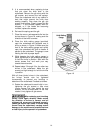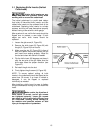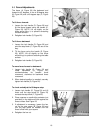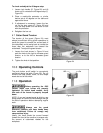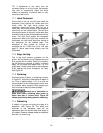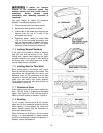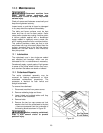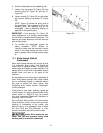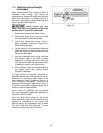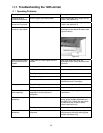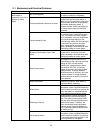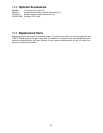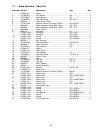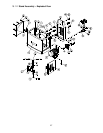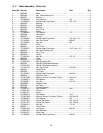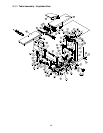
22
12.4 Whetting Knives (Straight
Cutterhead)
When knives become dull enough so that it is
noticeable when cutting, they should be
resharpened or replaced. A sharp knife will work
easier and last longer. The penalty paid for a
dull knife is less blade life and greater wear and
tear on all parts of the machine.
Jointer knives are very
sharp. Use care and proceed slowly when
working with or around the cutterhead.
1. Disconnect machine from power source.
2. Remove the pulley cover so you can rotate
the cutterhead by means of the belts.
3. Use a fine carborundum stone. Cover it
partly with paper, as shown in Figure 34, to
avoid marking the table.
4. Lay the stone on the infeed table. Adjust the
infeed table and turn the cutterhead until the
stone lies flat on the bevel of the knife and
flat on the infeed table.
5. Hold the cutterhead from turning, and whet
the beveled edge of the knife, stroking
lengthwise by sliding the stone back and
forth across the table. Do the same amount
of whetting on each of the three knives.
6. When finished, reset the knives parallel to
the outfeed table. See “Setting Knives
(Straight Cutterhead)”.
If knives cannot be properly retouched as
described above, they must be ground and re-
surfaced to a new bevel edge. Check in the
phone directory under “Sharpening Service” or
“Tool Grinding or Sharpening.” It may be less
expensive to purchase a new set of knives. If
the jointer is used often, keeping a spare set of
knives on hand is recommended.
Knives (stock no. 6292535) may be ordered
from your authorized Powermatic distributor or
by calling 1-800-274-6848.
Gum and Pitch which collect on the knives
cause excessive friction as the work continues,
resulting in overheating of the knives, less
efficient cutting, and consequent loss of blade
life. Use "Gum and Pitch Remover" or oven
cleaner, to carefully wipe off the knives.
Figure 34



